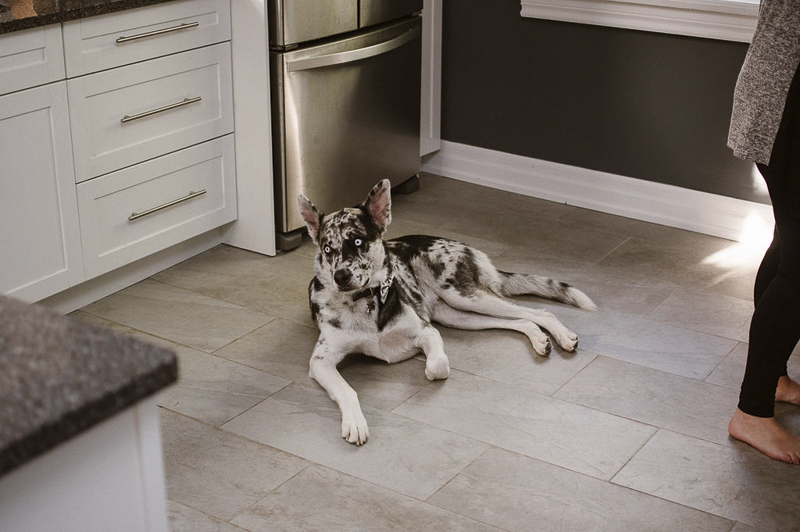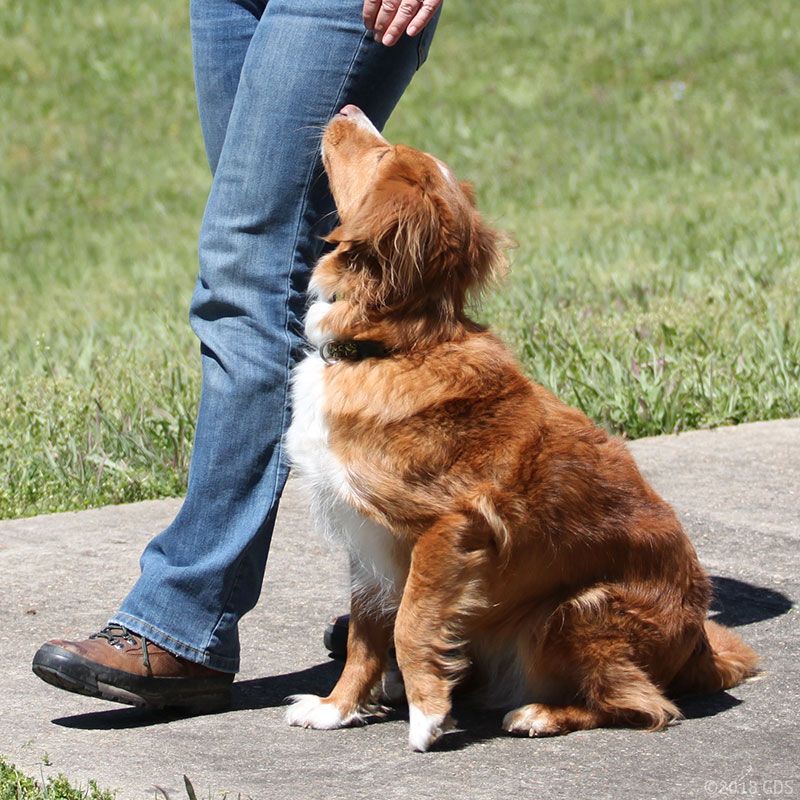Do You Have a Dominant or Assertive Dog? 8 Subtle Ways to Lead Your Dominant Dog
Do you believe you have a dominant dog at home? Here’s some information on recognizing dominant behavior (which is often misinterpreted) and our top 8 recommendations for how to lead a dog that is displaying this behavior. Knowing what is causing your dog’s behavior and how to address it are the keys to a long, healthy relationship with your dog!
Dominant Dog Behaviors
Aggression is the first thing people think of when they think of a dominant dog, but dominance is actually one of the less likely sources of aggression. For every 10 dogs we see that are displaying aggression, 8 of them are behaving that way out of fear. We’re talking lunging, barking aggressively, biting, and/or being completely unmanageable around things that make them nervous. So, if your dog is displaying any of these behaviors, we need to look a little deeper to see what the source is.
Dominant dogs can behave this way, but it tends to be more situational. They may behave aggressively when someone tries to come into your home or yard but be perfectly fine meeting people when not at home. They might become agitated with other animals or push them around when they’re getting attention from you (or another human in the household) but play with them in other situations. They might also protect items from you – their food, toys, bones, bed, furniture, etc. These are all instances where the dog believes he or she is in charge of making decisions about things that they aren’t in charge of making – who can come in, who gets attention, who can touch resources, etc.
If you’re seeing this type of behavior from your dog, implement the recommendations below and get in touch with an obedience training company like ours that can help guide you through the process of changing your relationship with your dog.
Our Top 8 Subtle Ways to Lead Your Dominant Dog
- No furniture. I’ll be the first to tell you that I allow my dogs on the furniture all the time, and in fact, I intentionally bought a larger
sofa so all of my dogs would be able to fit on it with me! I believe allowing fearful dogs to join me on my furniture is a very effective tool to build their confidence. The flip side of that is, when you own a dominant or assertive dog, they don’t need the confidence building that comes with sitting where the leaders sit. In fact, they need to be reminded that the leaders DO sit on the furniture, and they DO NOT. It’s the first change we recommend making in the household when we hear that a dog is having trouble understanding who makes the decisions.
2. He moves if he’s in the way, you don’t. If you’re in the kitchen and you need to move from the stove to the fridge, but your dog is standing in the way, what do you do? Do you detour? Or do you expect him to move out of the way? Leaders don’t move out of the way, no matter how cute their pack looks blocking their path. Use your body language to shift your dog out of the way without changing the course you planned to take. You can also teach a command that sends your dog out of your way (for example, our “place” command would send your dog to a bed, rug, etc instead of letting them block the path).

3. Dogs work for every meal/snack/reward/resource. There’s no such thing as a free lunch for a dog that’s know his place in the leadership structure. All rewards come from you and must be earned! What do I mean by this? One example is mealtimes. I wouldn’t just put the food in the bowl, put the bowl on the floor and walk away. I would at the very least give a short series of commands for the dog to follow, then release and reward them with the bowl of food. In tougher cases, I’d give commands and reward the dog for them with a single piece of kibble until their meal was gone. I wouldn’t leave toys out all over the house or yard, I’d bring them out when it’s time to do some obedience practice, and reward with them and put them away after.
4. Ignore demands for attention. If you’re relaxing on the sofa and your dog brings you a ball to throw, tosses it in your lap and looks expectantly at you, what do you do? If you pick the ball up and throw it, you’ve just been told (by your dog) that it’s play time, and you’ve just told your dog that he has the power to make that decision. Ignore them and the ball until they walk away. If you’re petting another dog and yours pushes his way in and takes your attention away, you’ve just told him he has the power to make that decision. Use your body language to block him from the other dog and continue with the affection you were giving.
5. 
6. Block with your body, body language is key. Did you know that dogs read body language better than any other species out there? They’re incredible at reading our subtle cues, whether we intend for them to or not. If someone new is coming into your home and you’re behind your dog, maybe even a few feet back at the end of a leash, your body language is telling your dog that they’re free to make whatever decisions they feel necessary in that situation. Alternatively, if your dog is at your side or you are between the new person and your dog, you’re telling them you have the situation under control.
7. Teach and reinforce a strong Heel command. The heel command (walking with your dog’s collar right at your side or slightly behind you, giving you their attention) is the most obvious command for teaching who takes the leader position and who takes the follower position. If your dog’s collar is even a couple inches in front of your leg, they’re leading the walk.

8. Expect disagreements – don’t compromise. If you’ve determined that you do have a dominant or assertive dog, they’re unlikely to give leadership away willingly. Becoming the leader they need will be an ongoing conversation you have consistently over a period of time. There may be disagreements, you may lose ground before you gain it back.
Need help? Reach out to us – we can help set the foundation in obedience to start addressing concerns you have for your dominant or assertive dog!


 sofa so all of my dogs would be able to fit on it with me! I believe allowing fearful dogs to join me on my furniture is a very effective tool to build their confidence. The flip side of that is, when you own a dominant or assertive dog, they don’t need the confidence building that comes with sitting where the leaders sit. In fact, they need to be reminded that the leaders DO sit on the furniture, and they DO NOT. It’s the first change we recommend making in the household when we hear that a dog is having trouble understanding who makes the decisions.
sofa so all of my dogs would be able to fit on it with me! I believe allowing fearful dogs to join me on my furniture is a very effective tool to build their confidence. The flip side of that is, when you own a dominant or assertive dog, they don’t need the confidence building that comes with sitting where the leaders sit. In fact, they need to be reminded that the leaders DO sit on the furniture, and they DO NOT. It’s the first change we recommend making in the household when we hear that a dog is having trouble understanding who makes the decisions.
